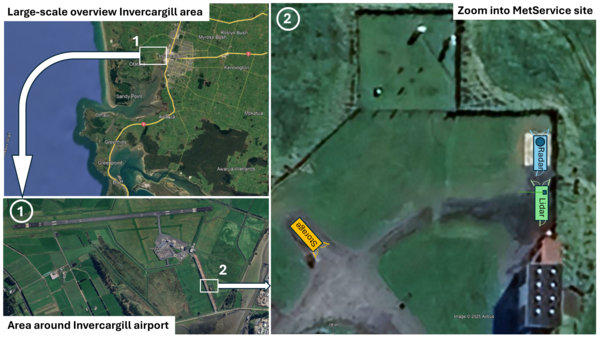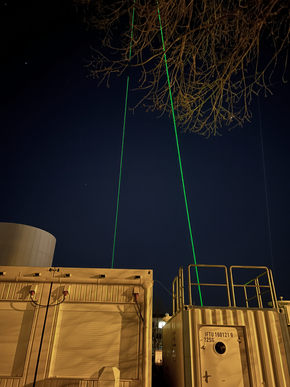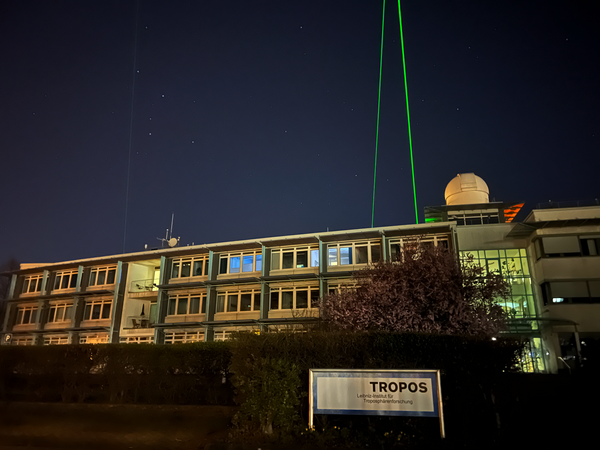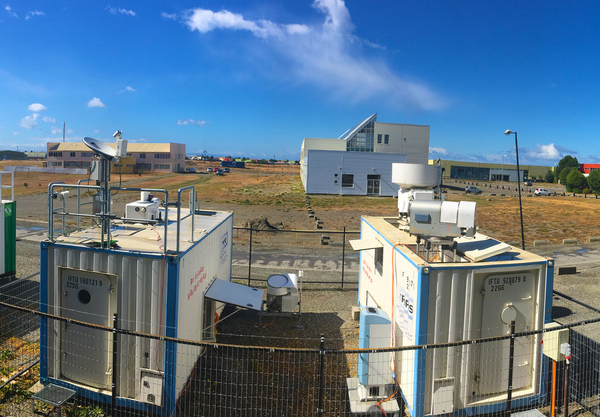goSouth-2 campaign coming closer: Observations in Invercargill about to be set-up
Leipzig & Invercargill, 19.08.2025 – Patric Seifert
Preparation of goSouth-2 in New Zealand in its final state. After 4 months spent on the ocean and in the harbor of Bluff, setup of the LACROS observatory in Invercargill will start on the 21st August.
LACROS observatory finally to be delivered to MetService
More than four months ago, on 17 April 2025, the journey of the Leipzig Aerosol and Cloud Remote Observations System LACROS to Invercargill started. On 21 August, the observatory will finally be delivered to its site on the area of the New Zealand weather service MetService in Invercargill, which will be its destination for about the next 18 months.
While LACROS was transported to New Zealand, the time without the need to supervise, process and analyze the continuous observations of LACROS was intensively used to prepare for the goSouth-2 campaign. Collaboration agreements between MetService and University of Canterbury were implemented, licenses for operation of the radar and lidar systems were obtained, and the infrastructure was prepared for the installation and operation of the LACROS instruments.
From Thursday the 21st August until 5th September things will get busy in Invercargill. Five members from TROPOS as well as partners from MetService and The Air Quality Collective will be on-site to install the instrumentation. The actual delivery of the three containers is planned for around noontime on the 21st August.
Lidar system PollyXT to be set-up first
Immediately after the delivery of the containers, staff from TROPOS will start with the implementation of one of the key instruments of LACROS: The lidar system PollyXT. The near-vertical pointing green laser beam of this lidar system will likely become a prominent feature of the skyline of the nightly Invercargill. So far, similar green lights in the sky might have occurred only during the rare Aurora Australis events in this region.
The measurements of the PollyXT lidar will complement the existing datasets of PollyNet from other key sites of atmospheric research. While being basically similar set-up like a standard ceilometer system, PollyXT emits laser lights at several wavelengths. The fraction of the laser light that is backscattered to the lidar is then split into a total of 18 different wavelengths (channels), each of them holding a certain piece of information about the properties of the atmosphere above the lidar. While some of the channels solely provide information about the presence of aerosols and clouds between the surface and heights of approximately 20 km, other channels can be used to identify ice crystals, or cloud droplets, or certain types of aerosols.
The goal of goSouth-2 in brief
During the goSouth-2 campaign in Invercargill, the PollyXT lidar will be used to characterize the aerosol properties in the different air masses that approach the southern tip of New Zealand from unique directions. When air masses approach from Antarctica, the air is supposedly very clean and will only contain emissions from the Southern Ocean. However, during 25% of the time, we expect that air masses approach from Australia. It will be exciting to see, how the properties of the aerosols in these contrasting air masses differ and which impacts they have on the formation and evolution of clouds, precipitation, and the energy balance of the atmosphere. First insights into the influence of aerosol variability on clouds above New Zealand were already discovered based on the analysis of an existing lidar dataset from the National Institution for Water and Atmosphere (NIWA) observatory in Lauder. Based on this dataset, a team of scientists from NIWA, Japan, and TROPOS found that Australian aerosols favor the formation of ice crystals at temperatures below 0°C in clouds which would otherwise stay in an unstable supercooled liquid state. More information can be obtained directly from published article about the study.
A bit more patience please
However, all the written information is just gray theory as long as the lidar measurements in Invercargill haven't been started. So let's keep fingers crossed that the setup goes well and that we will soon see the first light from the PollyXT lidar in the sky of Invercargill. Similar to how it looked like at TROPOS in Leipzig, Germany, just before the PollyXT lidar left for the transport to Invercargill.
A glimpse on how the LACROS setup will look like
Take a look at below photograph to get an impression of how the LACROS obsevatory will look alike when it will finally be fully deployed in Invercargill.




